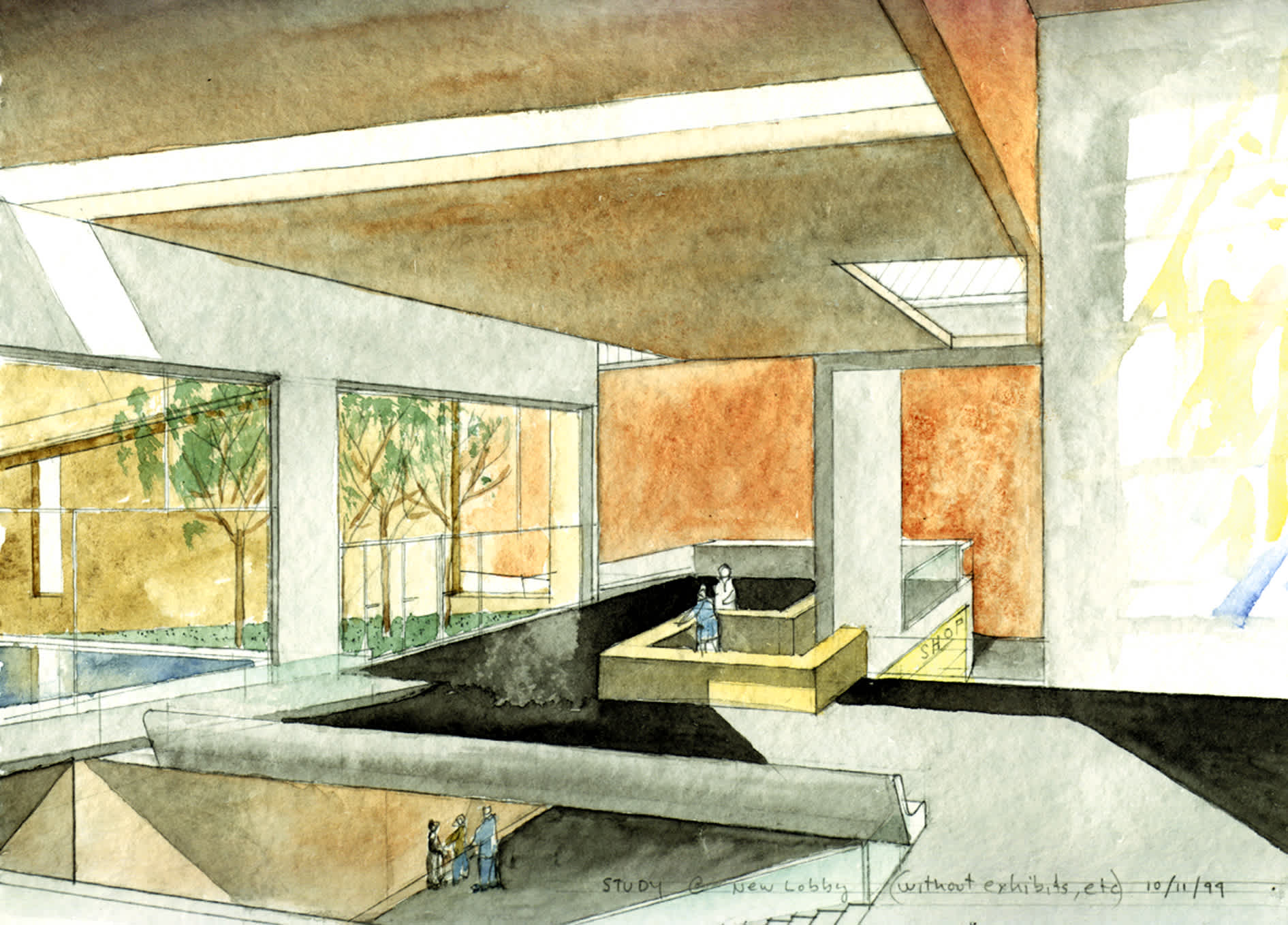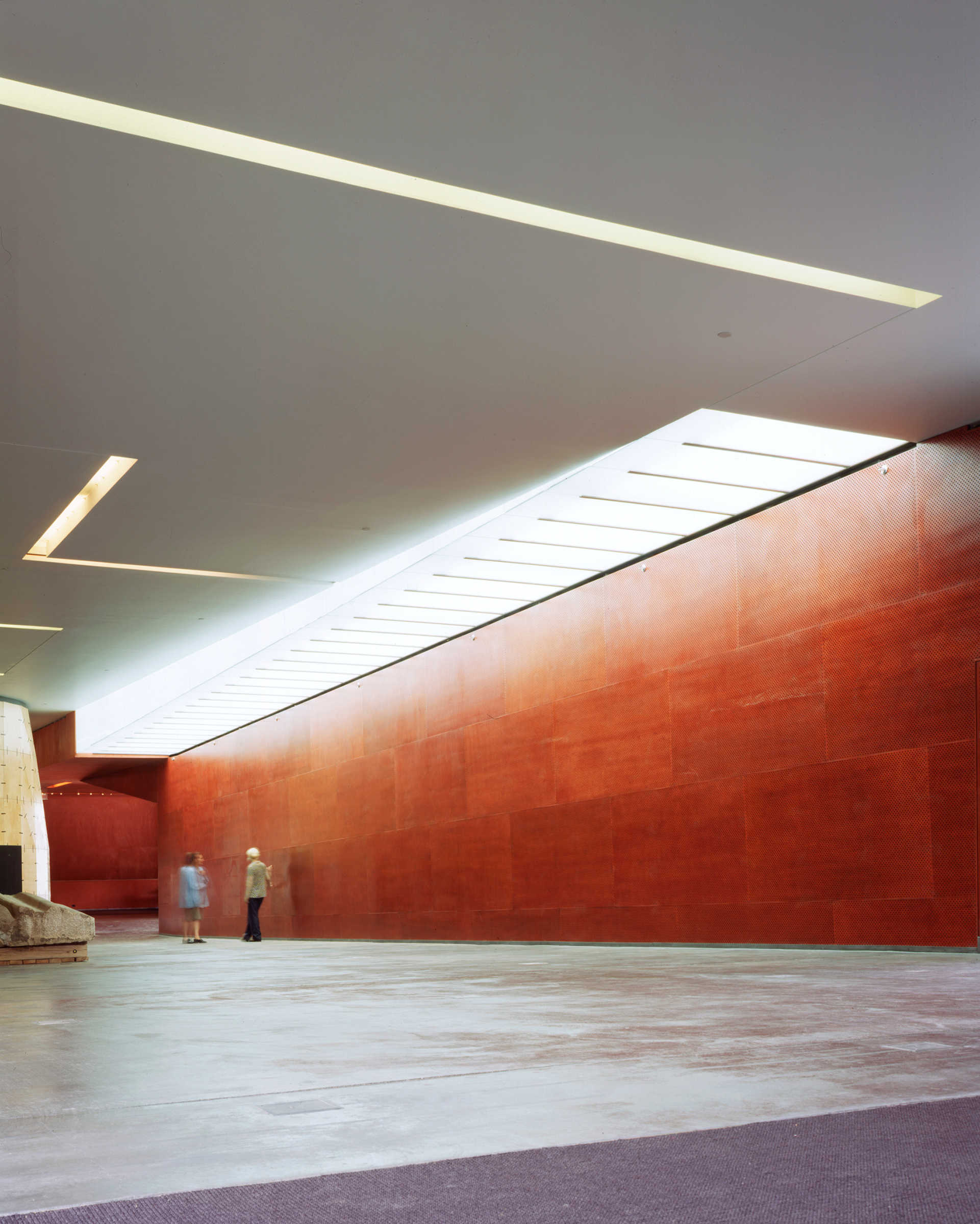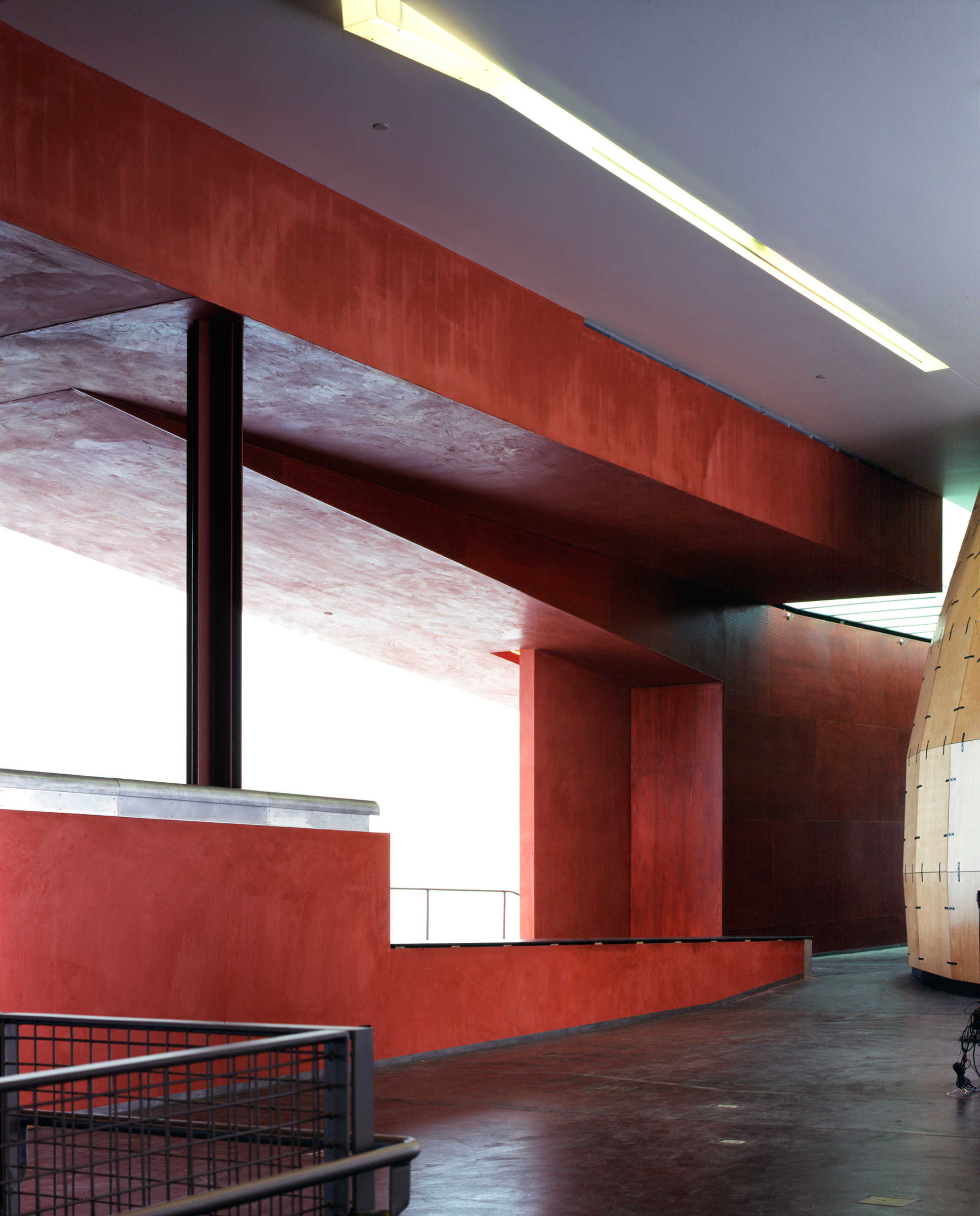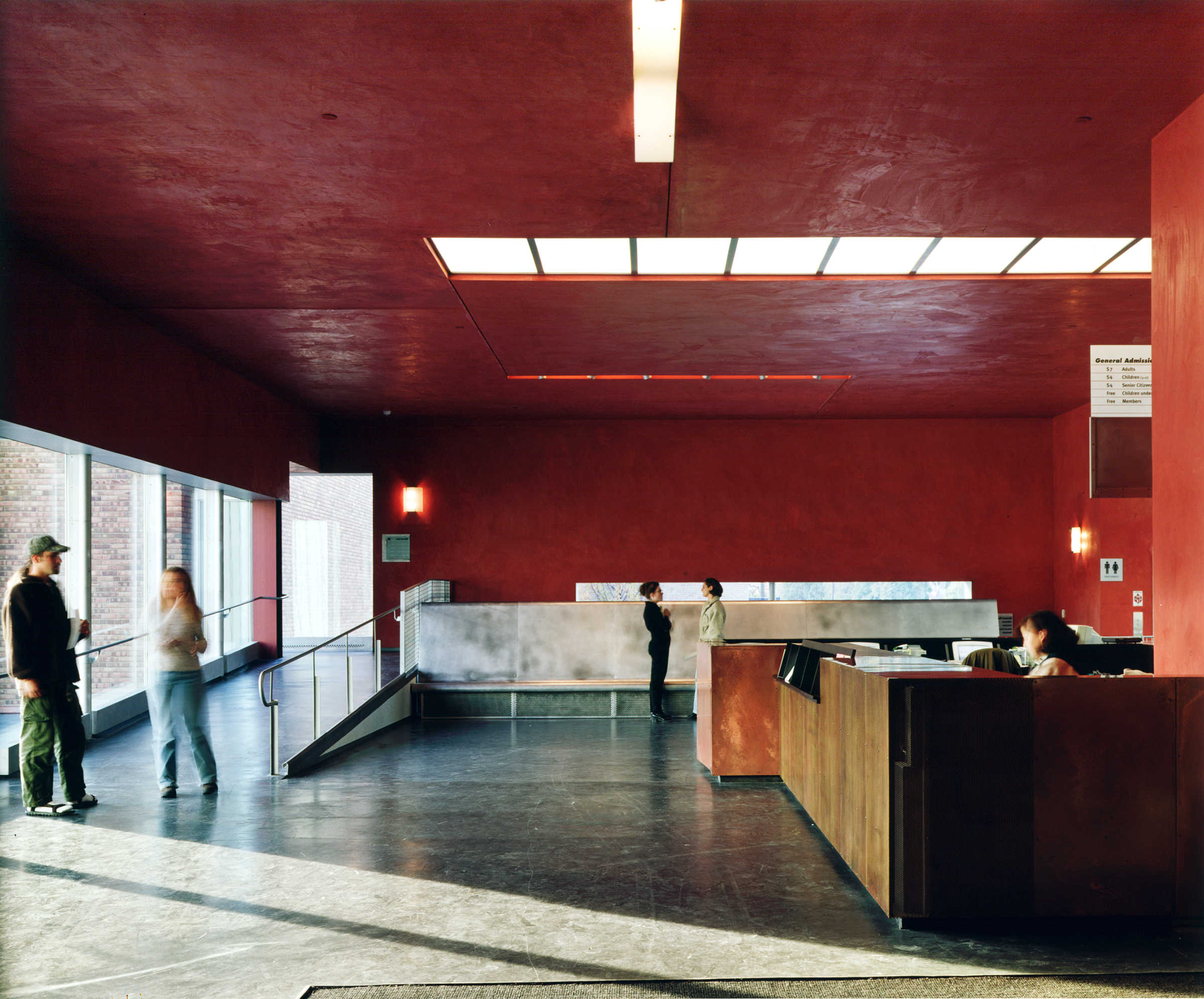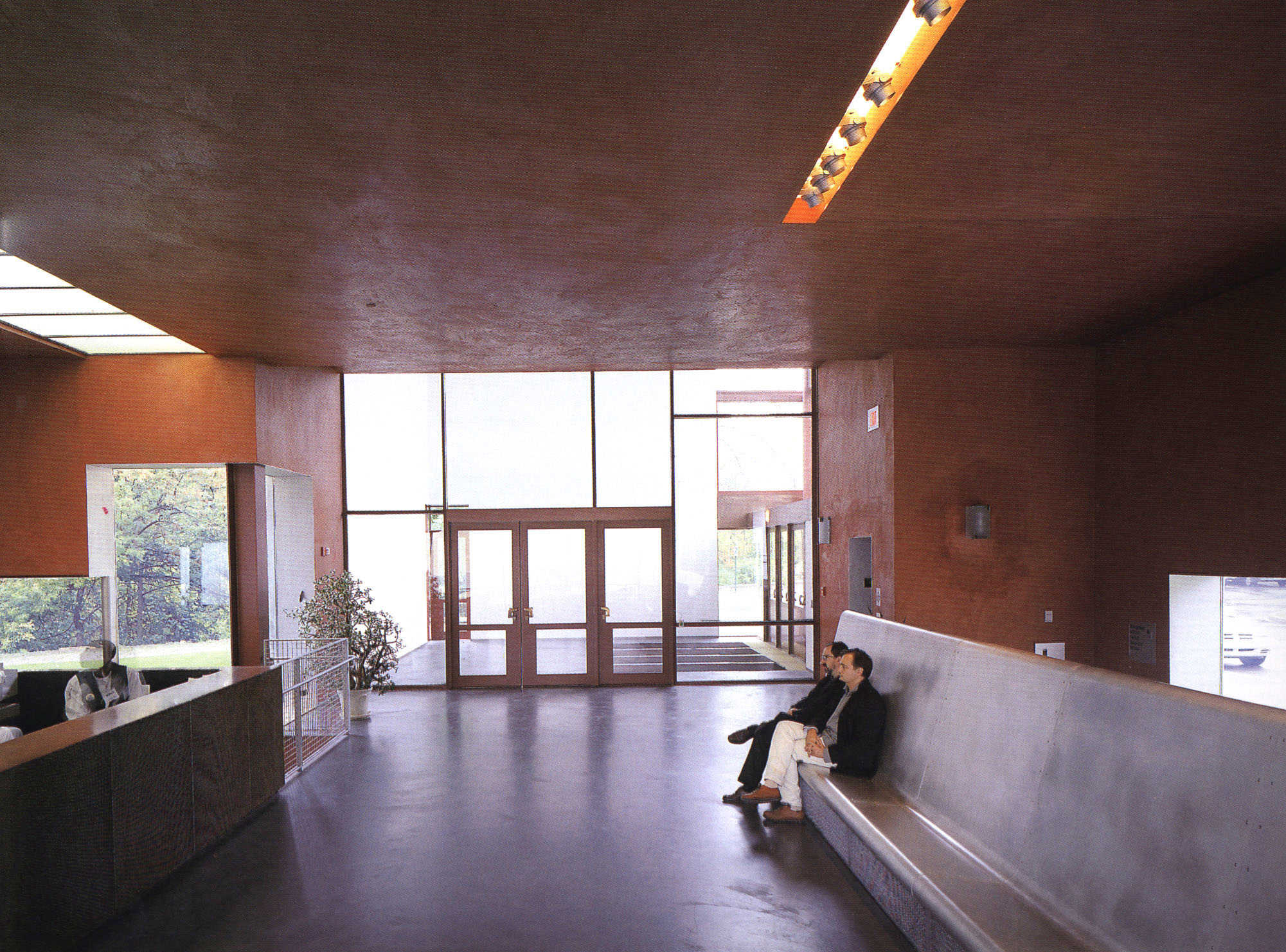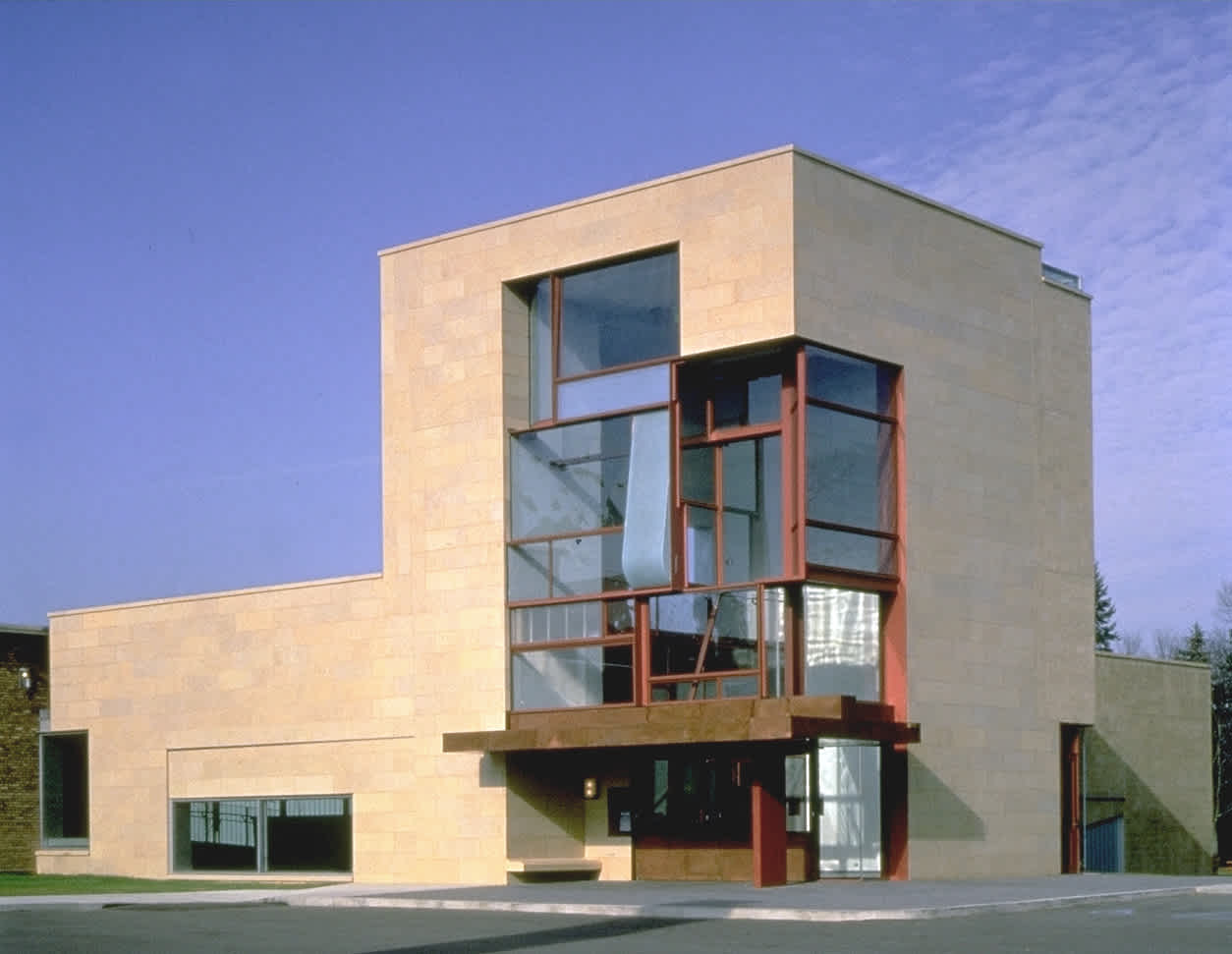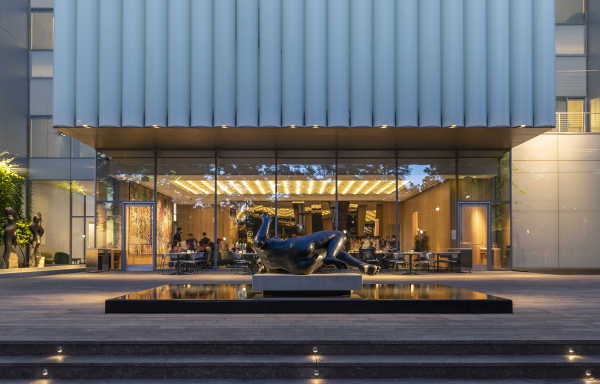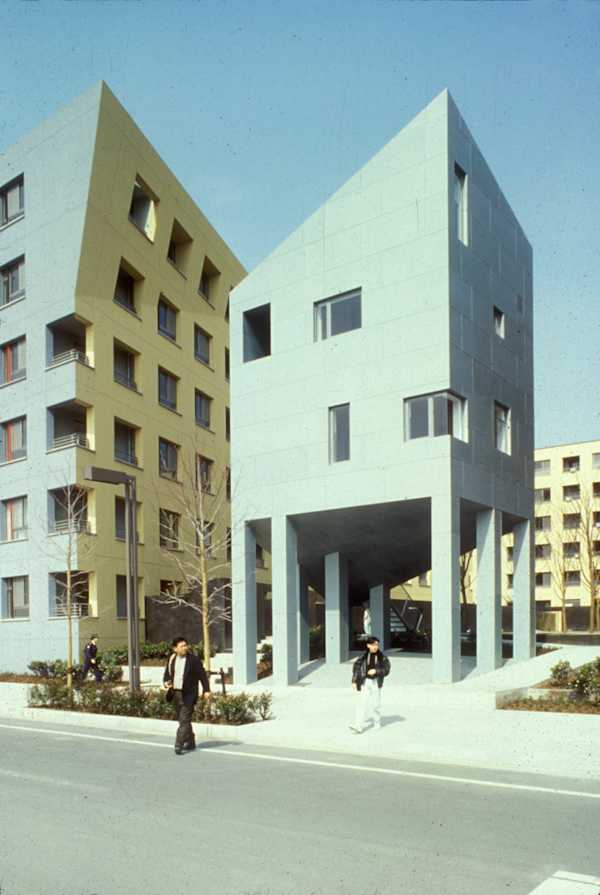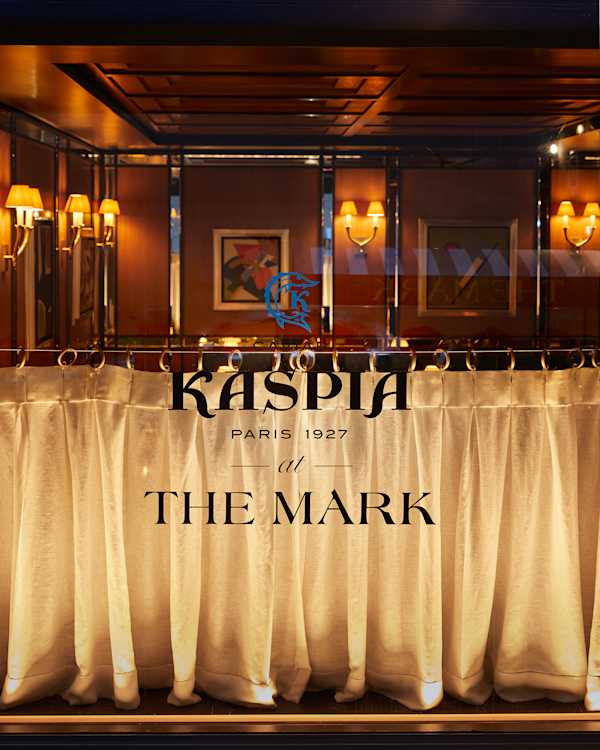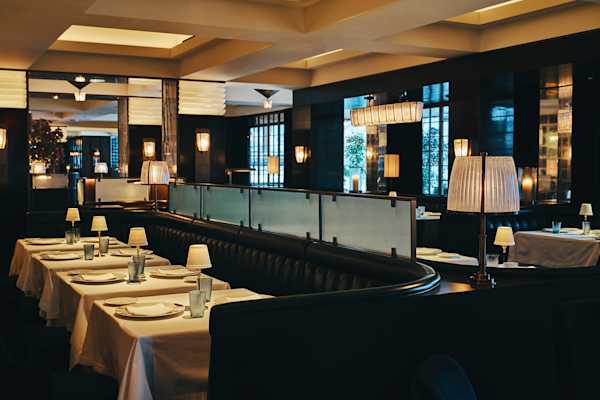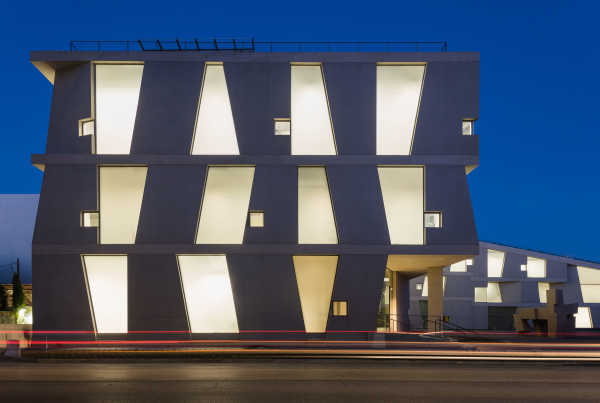For this extension of Eliel Saarinen’s building for the Museum of Science from the 1930s, numerous lighting systems are repeated throughout to reflect architect Steven Holl’s key design concept of “phase space,” a property of Strange Attractors. To do so, lighting radiates through slots of light, it is diffused through glass, and adjustable lights on a track system are employed. Skylights appear like glowing volumes at night.
The lighting principle follows a subtle and defined rhythm that turns along the curves of the strange attractor motif organizing the building: the lighting fixtures will be small and their grouping rhythmic. The diffuse and calming lighting will act as a restful visual bridge between exhibits. During the day, lines of skylighting will provide clean unobtrusive illumination and at night the same structures will become bars of electrical light. The straight lines of the light bars will further promote the feeling of rhythmic motion set in play by the building itself. Following the structures established by the architecture, the lighting will focus attention on the points of possible divergence within the curves of the building just as points of independent trajectory act to center the energy nexus of strange attractors.
Architect
Steven Holl ArchitectsSize
94,000 ft2 / 8,733 m2
Status
CompletedDate Completed
1998
Principal
Photo Credit
Paul Warchol
